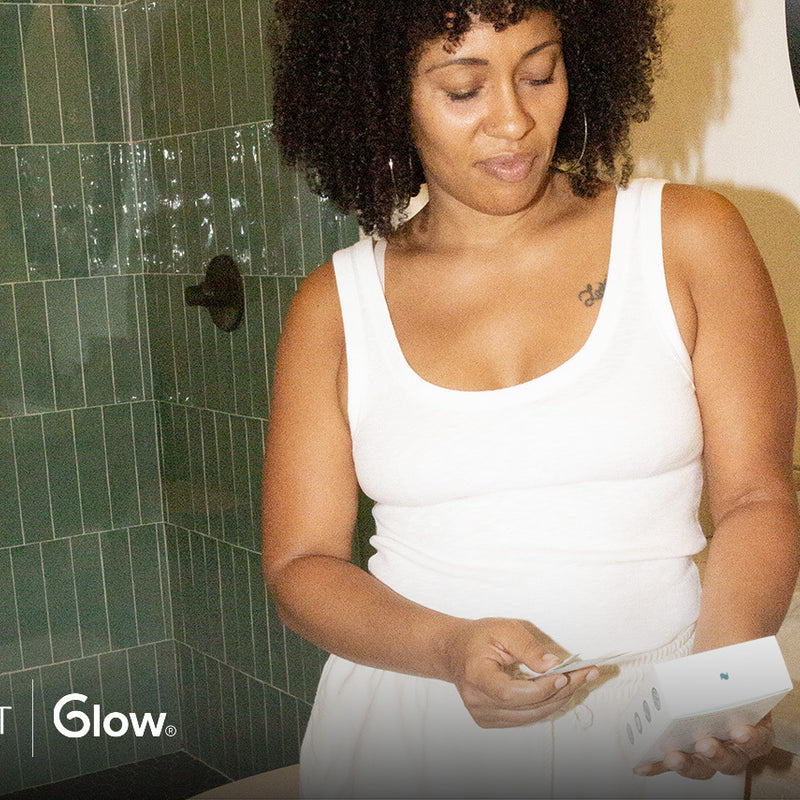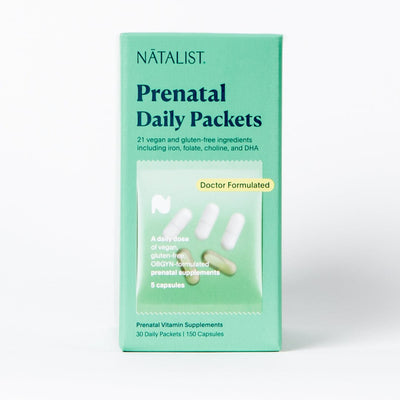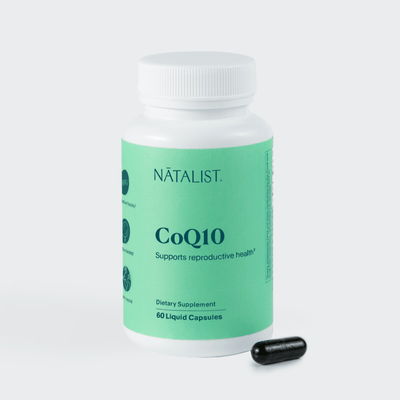An OBGYN’s Guide to Getting Pregnant

Whether you’re just starting to try to get pregnant, or you’ve been at it for a few months and want some guidance, here are tips to help.
Getting pregnant may seem straightforward in theory, but when you’re actually trying, it can feel a little like a black box. From using fertility lube to various procedures and medications you can take, you should feel supported and have the information you’re looking for throughout your entire fertility journey. Luckily, science and medicine have a lot to say about the best ways to get started and how to troubleshoot if things don't go as expected.
The preconception visit
Before you’ve even started trying to conceive on your own, experts recommend checking in with an OBGYN or your primary care provider a couple of months prior, just to get the lay of the land. They’ll be able to compassionately help you make a game plan that keeps several factors in mind, like any potential health risks, and lifestyle changes you (and/or a partner, if applicable) may need to make.
For women, your doctor will likely also run through any medications you take to see whether or not any drugs in your regimen could impact embryo development or cause birth defects further down the line. They’ll want to know about prescription medication and birth control, as well as herbal supplements and vitamins, too! So come prepared to talk about it all.
During this conversation, it’s also especially important to make sure your doctor knows if you have conditions that can directly impact fertility, like polycystic ovary syndrome (PCOS) or endometriosis, but it’s equally as important to discuss other chronic conditions like diabetes or thyroid disease. While these issues may come less immediately to mind when considering reproductive health, many health conditions can have far-reaching effects. Management of these chronic conditions has implications for pregnancy, and it's best to discuss your options beforehand so you can be prepared and know your pregnancy-safe treatment options.
Putting TLC in TTC
There’s no need to sacrifice all of your guilty pleasures in order to conceive, but maintaining a balanced and conscientious diet can make a difference in how long it takes to get pregnant. Given the glut of nutritional advice online, it can be tough to tell fact from fiction when it comes to what it means to eat a “healthy fertility diet,” and ultimately it’s best to discuss this with your doctor or a nutritionist for a more personalized plan. It’s also not just on women to take their diets into consideration when trying to conceive. Men’s diets can impact their side of the fertility bargain too. Research suggests a possible link between a healthy diet and higher semen quality.
Here are some broad guidelines to be mindful of:
- Women should start taking a prenatal vitamin when they’re trying to conceive. Ideally, you should start this routine one to three months beforehand. Among other things, women should consider taking a daily DHA or folate supplement (either as MTHF folate or folic acid), which helps prevent birth defects of the brain, spine and spinal cord.
- If your prenatal doesn't contain iron, make sure you are getting a daily dose from your food. It's found in healthy foods like spinach, lentils, and red meat. Iron helps your body make a protein called hemoglobin, which carries oxygen from your lungs to other parts of your body, boosting your energy levels.
- Eat a healthy diet full of fish, poultry, whole grains, fruits, and vegetables. That goes for men as well. Healthy diets have been linked to higher fertility in both men and women.
Lifestyle choices can influence fertility. In the same vein as diet is weight. If women are overweight or underweight while they’re trying to conceive, they may encounter some difficulty. Body Mass Index (BMI) is a tool often used to determine healthy weight (between 18.5 and 24.9), though it does have its limits and we don’t all conform to tidy boxes on a chart. Checking in with a physician can help you set realistic, attainable goals around how your weight may impact how long it takes you to conceive.
Exercise plays a role here too. Physical activity increases mental and physical health, for both mom and future baby. Granted, this doesn’t mean you have to start training for a triathlon (though by all means, go for it if you want to!). Experts recommend something more moderate and achievable for the average person: at least a half-hour of exercise, three days a week.
Know your fertile window
Now that we’ve talked about the various ways you can prepare to get pregnant, let’s talk about what’s actually going on inside a woman’s body that can help you seal the deal when you’re trying to conceive.
For women, keeping up with your menstrual cycle (we include a free tracker in our Ovulation Test Kit!) can help you identify the exact time of the month when you’re likeliest to conceive: your fertile window. According to the American Society for Reproductive Medicine, a woman’s “fertile window” is the six-day period that includes the five days before ovulation and the day of ovulation. Having sex daily or every other day within this window increases your chances of getting pregnant.
But how do you figure out when this period of time is? If you have an extremely regular, textbook menstrual cycle that lasts 28 days, your fertile window will usually be from day nine to day 14 of your cycle. But sometimes it can be tough to tell, especially if you have an irregular period. Fortunately, there are two fast and easy tests to help you figure it out:
1. Cervical Mucus Test
Checking cervical mucus is an easy and inexpensive way for a woman to keep track of ovulation using just her fingers and her powers of observation. Cervical mucus is a fluid secreted by your cervix; it provides natural lubrication during sex, protects against infections, and helps sperm reach the egg.
The amount and type of cervical mucus that a woman’s body produces changes throughout the month. During ovulation, it will have a slippery and clear consistency, which is similar to egg whites. If you see this, get to it! This means you’re ovulating and it’s the ideal time to have sex if you’re trying to conceive.

2. Ovulation Tests
If you want to be a bit more scientific about tracking ovulation, ovulation tests (also called ovulation predictor kits) are another reliable option. These kits monitor levels of luteinizing hormone (LH) in urine. Although LH is always present in your body, it spikes significantly 16–48 hours before ovulation. This big increase in LH signals that it’s time for a woman’s ovary to release an egg.
Although ovulation tests are considered clinically accurate predictors of ovulation, they have some limitations. Rarely, women can experience an anovulatory cycle, which is when an egg fails to be released. Anovulatory cycles can also happen as a result of a few different conditions, including PCOS or weight disorders.
The main takeaway is you’ll want to start having sex during the days leading up to the LH surge, the day of the surge, and the day or two after. When you’re actively trying to conceive, we recommend buying pregnancy tests in bulk so you always have them on hand.
What about infertility?
Even if you’re doing everything by the book, listening to all the health advice, and sticking to having sex during your fertile window, you may still be waiting longer than you'd like for a positive pregnancy test. This is common, and not always cause for immediate concern. Sometimes it just takes time.
According to research by the American College of Obstetricians and Gynecologists, you should consider seeing a Reproductive Endocrinology and Infertility (REI) specialist if you're under 35 and have been trying consistently for a year without success. For women over 35, experts recommend seeing an REI if you’re still not pregnant after trying consistently for six months.
There are lots of potential causes for infertility, and we’ll get into some of them below. Luckily, many come with treatments and solutions.
First-line troubleshooting
Abstaining from smoking and cutting back on alcohol should be the first lifestyle change you enact that can positively impact fertility, for both men and women. If you excessively consume caffeine consider cutting back on that as well. High caffeine consumption has been linked to an increased risk of pregnancy loss.
Age is unfortunately still a factor
Many people are now postponing having children until their 30s and 40s. Waiting to become a parent until that age has its benefits; you’re usually more financially secure and have a more stable support network, but it’s also important to know the potential impacts on your fertility.
All women are born with their lifetime supply of eggs. As women age, both the pool and quality of their remaining eggs declines, most precipitously at age 35. This decrease in quantity and quality means an increased risk of miscarriage and aneuploidy (an abnormal number of chromosomes in the egg). This can lower a woman’s odds of conceiving and carrying a pregnancy to term. If you find yourself in this position, there are many other paths to parenthood that can be explored, including IVF, surrogacy, and adoption.
While men don’t experience an equivalent precipitous drop in fertility with age, they do experience any age-related changes. As a man grows older, his testosterone levels decrease and he produces less sperm over time.
Reproductive health roadblocks
If you feel like age and lifestyle factors aren’t an issue, but conception still isn’t happening, there are some common health conditions associated with reduced fertility that could be at play. For women, the most common are endometriosis and PCOS. Male-factor (of varying types) is a cause of infertility in about 40–50% of couples.
Endometriosis is a condition where the endometrium (or inner lining of the uterus) grows abnormally in other areas, like the fallopian tubes, ovaries, bowels or bladder. The primary symptom is pelvic pain, and sometimes pain with bowel movements or peeing. People can also experience painful sex. Endometriosis can cause scarring of the fallopian tubes, which can affect fertility. PCOS can complicate a woman’s journey to pregnancy because of its stereotyped hormone imbalances that result in infrequent ovulation and irregular menstrual cycles.
Women with endometriosis and PCOS conceive all the time, but it’s worth discussing with your doctor if you think you have one of these conditions before you try to get pregnant.
Turning to reproductive technology
Modern medicine is there to help you along your journey if you find yourself in need. Some women take first-line treatments like Clomid or letrozole to induce ovulation. This can help you if your menstrual cycle is irregular, making it hard to pinpoint your fertile window.
Another option is intrauterine insemination (IUI), in which sperm is placed inside the uterus during a medical procedure rather than via sex. It is a great option for single parents by choice, LGBTQ couples, couples who may not be able to have sex or couples who have tried for a while with no success. The sperm used could be from a partner or a donor.
Lastly, there is in vitro fertilization (IVF), which involves fertilizing an egg with sperm outside of the body, in a lab, and then putting the newly fertilized embryo back into a woman’s uterus in the hope that it will implant and become a fetus. There are many reasons why hopeful parents turn to IVF: sometimes it’s used by heterosexual couples in which both or one partner is infertile, but it’s also used by single parents by choice and LGBTQ couples. The egg and sperm that are used could be from both partners or donated, either to a couple or a single person; a woman could be using eggs that she had previously removed and frozen, or she could be embarking on this journey from scratch. The list goes on!
IVF does come with additional costs and it can be financially limiting for many. Talk with your insurance provider (both medical and prescription drug) to see if any of your treatment would be covered.
In conclusion
Remember to always include a physician in any big conception decisions you’re considering, like treatment for endometriosis, navigating male infertility, changing your diet, or trying IVF. While the internet is a great place to start gathering information or to get some basic questions answered, it’s best to turn to someone who knows your body and is licensed to help you make the most informed choices.
There are many possible paths to parenthood, no matter who you are, what health issues you’re navigating, or what kinds of expectations you have. This is just an overview, but we hope that you feel more informed and empowered to make whatever choices are ultimately right for you.
Shop Products From This Article
Get 20% off sitewide with code EARTHDAY at checkout
It’s Mother Earth Month at Natalist! Get 20% off sitewide and help us double our environmental impact. For every pound of plastic sold this month, we’re facilitating the removal of twice the amount of plastic from nature.
Shop Now





















